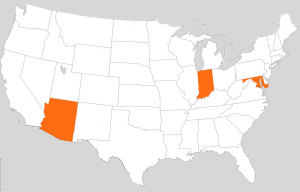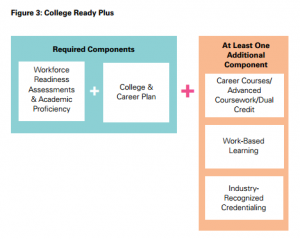As is tradition at the beginning of the legislative sessions, numerous governors have presented their policy agendas in their annual addresses to their state legislatures. These addresses provide an opportunity for the 20 new governors to highlight their legislative priorities. Many of the State of the State Addresses highlighted successes related to Career Technical Education (CTE) and governors’ commitments to advance CTE in 2019.
Many governors celebrated successes of previous and existing initiatives in their speeches. In Arizona, Governor Doug Ducey celebrated the 99 percent high school graduation rate for students in Arizona CTE programs. In Connecticut, Governor Ned Lamont proposed increasing access to vocational technical schools and apprenticeships and celebrated the successes of students at a new Career Academy in Waterbury, CT. Meanwhile, in New Jersey, Governor Phil Murphy celebrated the creation of more than 100 new apprenticeship programs in the past year.
Governors also emphasized the importance of advancing equity in their states. In Iowa, Governor Kim Reynolds proposed creating a new program called “Computer Science in Elementary,” which will integrate computer coding into class lessons at six high-poverty elementary schools. In Delaware, Governor John Carney proposed a statewide commission comprised of community leaders who will recommend steps to help disadvantaged students succeed.
Other governors set goals for the year and called for additional funding for CTE. In Indiana, Governor Eric Holcomb set a goal for 60 percent of Hoosier adults to have a high-value credential beyond high school. In Nebraska, Governor Pete Ricketts celebrated that the Developing Youth Talent Initiative, which connects middle school students to work-based learning opportunities in the manufacturing and IT sectors, has impacted 7,000 students to date and called on the state to increase funding for the initiative by $1.25 million. In Washington, Governor Jay Inslee proposed a budget that would allow 100,000 students to participate in paid internships and apprenticeships over the next 10 years.
In total, more than 12 governors have celebrated or made commitments to foster CTE in their states during their State of the State Addresses. Advance CTE will continue to monitor the State of the State Addresses as they happen for their relevance to CTE.
To learn about CTE related policies that governors prioritized in 2018, join Advance CTE, ACTE and a state leader to discuss 2018 CTE related policies in more depth on February 14 – to register for the webinar click here.
Brianna McCain, Policy Associate


 It is possible that 2017 will be a pivotal year for Career Technical Education (CTE). With
It is possible that 2017 will be a pivotal year for Career Technical Education (CTE). With  Over in the Grand Canyon State, the Arizona State Board of Education approved a comprehensive (albeit somewhat confusing) college and career readiness indicator to include in the state’s accountability system. The
Over in the Grand Canyon State, the Arizona State Board of Education approved a comprehensive (albeit somewhat confusing) college and career readiness indicator to include in the state’s accountability system. The 
 In the nine months since President Obama signed the Every Student Succeeds Act (ESSA) into law last December, states and policymakers have been hard at work digging through the legislation and deciding how to structure their new plans. ESSA, which reauthorized the Elementary and Secondary Education Act, presents a number of opportunities to expand access to high-quality Career Technical Education (CTE). As states prepare to implement the law next year, we will provide periodic updates on their progress and share strategies for leveraging ESSA to support CTE at the state level.
In the nine months since President Obama signed the Every Student Succeeds Act (ESSA) into law last December, states and policymakers have been hard at work digging through the legislation and deciding how to structure their new plans. ESSA, which reauthorized the Elementary and Secondary Education Act, presents a number of opportunities to expand access to high-quality Career Technical Education (CTE). As states prepare to implement the law next year, we will provide periodic updates on their progress and share strategies for leveraging ESSA to support CTE at the state level. A
A 